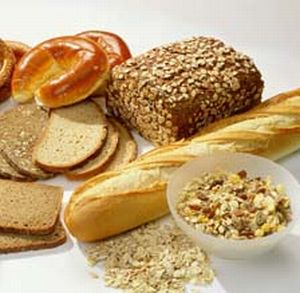So you are probably wondering…..do the beverages I drink really make that much of a difference? They are only liquids, right? Liquids “go right through me” so how much of an ill effect can they have?
You have probably heard the old saying “You are what you eat?” Well, it is true, but “You are what you drink” also!
Beverage Guidance Panel
The Beverage Guidance Panel is a group of nutrition experts from the United States, which formed several years ago. The purpose of this group was to review the existing research to determine which beverages are considered healthy. They based their recommendations on the number of calories, energy and nutrients provided and health benefits of different beverages. The winner hands down was water. But that doesn’t mean this is the only beverage we should drink. The Beverage Guidance Panel developed a six-level pitcher for beverages similar to the food pyramid. (Published in the March 2006 issue of the American Journal of Clinical Nutrition, Available online at www.beverageguidancepanel.org)
The average adult should aim to drink 8 glasses of fluids every day. The Beverage Guidance Panel recommends:
Water: at least 4 (8 ounce) servings a day for women and 6 (8 ounce) servings a day for men
Unsweetened coffee or tea (iced or hot): up to 8 servings of tea or 4 servings of coffee per day
Low-fat Milk: up to 2 (8 ounce) servings per day
100% fruit or vegetable juice, whole milk, or sports drinks: up to 1 (8 ounce) serving per day
Carbonated soft drinks: up to 1 serving per day
Diet beverages with sugar substitutes: up to 4 (8 ounce) servings per day
Alcoholic beverages: up to 1 drink a day for women and up to 2 drinks per day for men
Liquid or Empty Calories
In the United States about 20% of our daily caloric intake comes from beverages. The Institute of Medicine recommends men have 13 cups (3 liters) of fluid every day and women have 9 cups (2.2 liters) of fluid every day.
Most experts now believe that part of the obesity problem in this country comes from the increased consumption of calorically sweetened beverages. A recent study published in the American Journal of Clinical Nutrition (April 2009 issue) suggests that cutting back on liquid calories may actually result in greater weight loss. The study evaluated 800 adult men and women for fruit and beverage intake and weight changes. The results were interesting:
Cutting 100 calories a day from liquid intake lead to about a 0.5 pound weight loss at 6 and 18 months
Cutting 100 calories a day from solid food intake lead to about a 0.1 pound weight loss at 6 and 18 months
Eliminating one 12 ounce sugar-sweetened beverage a day lead to the greatest weight loss = 1 pound at 6 months and 1.5 pounds at 18 months
If you are trying to lose weight you must remember to count your liquid calories!!
Should you drink wine?
Is it healthier to drink decaffeinated coffee or tea?
Does grapefruit juice really interfere with some medications?
Can diet soda really make you fat?
Is grape juice as good as red wine in preventing heart disease?
Can vegetable juice help promote weight loss?
Is organic milk really healthier?
These are just some of the questions we answer in our eBook….
The above is the introduction to our new eBook called “You are What You Drink: A Healthy Beverage Guide” available on smashwords at http://www.smashwords.com/books/view/4830
This eBook contains information on the health benefits and adverse health effects of water, coffee, tea, milk, calorically Sweetened Beverages (soft drinks), non-calorically sweetened beverages (diet soda), fruit and vegetable juices, alcoholic beverages, sports and energy drinks, how to read a nutrition label on a beverage and lots more…
You can visit www.heart-strong.com for more info (Cheers)




 Posted by heartstrong
Posted by heartstrong 







